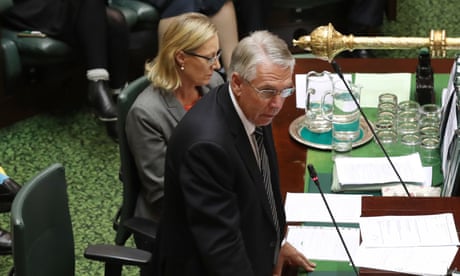Extract from The Guardian
Cost of Australian-based climate offsets is soaring but 90% of local purchases are for overseas projects.

Demand for Australian carbon units has not been so high since the Abbott government repealed Labor’s carbon-pricing scheme in 2014.
Last modified on Thu 8 Jul 2021 03.32 AEST
Pledges from major companies to reach net zero greenhouse gas emissions are driving up prices for Australia-based climate offsets to levels not seen since the 2014 repeal of the carbon pricing scheme.
Prices for Australian carbon units have topped $20 a tonne with demand up 20% in the past 12 months, with analysis released today saying prices could rise to $50 by the end of the decade.
But market analysts say climate policy uncertainty is holding the industry back, with more than 90% of all the offsets bought by Australian firms still going to projects based overseas.
Australian carbon credits are sold through federal government auctions. Higher prices mean greater demand, but also mean more expensive technologies to remove carbon – such as carbon capture and storage – start to become viable.

Carbon market analysts RepuTex says in its outlook report released on Thursday the demand for Australian Carbon Credit Units was seeing prices above $20 a tonne for the first time since the Abbott government repealed Labor’s carbon-pricing scheme in 2014.
Hugh Grossman, executive director at RepuTex, said the Australian market was mirroring the European Union’s emissions trading scheme, where prices had risen 260% since March 2020.
In Europe, demand is being driven by investors that are pushing companies to reduce their carbon footprint and lower their exposure to fossil fuels.
As corporates in Australia set voluntary targets, they are looking to buy carbon offsets as part of their company-wide programs to align with the global Paris climate agreement.
Grossman said he expected to see the Europe-style investor pressure take hold in Australia, adding to the existing demand from companies.
“About 95% of the current voluntary activity is going to international offsets and they’re available for less than a $1 a tonne coming from places like China, India and Turkey. Despite that, we still see domestic prices increasing,” he said.
“A lot of the capital that’s escaping overseas could be directed to domestic technologies like carbon capture and storage, blue carbon and soil carbon.”
As cheaper offsets became more scarce, RepuTex is projecting a continued – if muted – rise in the cost of Australian carbon credits.
The RepuTex analysis says Australia’s carbon market is not as mature as Europe’s, and “while a national policy framework is still lacking”, the country was being swept along by the shift to net zero.
John Connor, chief executive of the Carbon Market Institute, said: “The reality is that this needs a firm investment signal and what Australia needs is a coherent public policy framework,” he said.
The Morrison government has resisted pressure to update its existing 2015 greenhouse gas targets and has put no firm date on when it wants to reach net zero, saying only it wants to do so as soon as possible.
Earlier this week, the Australia-based Investor Group on Climate Change said 128 investment managers with $57tn of assets on their books had pledged through a new initiative to work with clients to reach a target of net zero greenhouse gas emissions by 2050. That suggests pressure on companies to cut their emissions is likely to grow.
Josh Harris is co-chief executive at Climate Friendly – a developer of about 130 carbon farming projects with a goal to cut 100m tonnes of CO2 by 2025.
One project is working with landholders and traditional owners on a 150,000 hectare property at Moombidary in southern Queensland, where improved management of cattle is allowing vegetation to regrow – capturing carbon.
“We are definitely seeing an increase in demand and an increase in requests,” he said.
Harris said Australia would need to find about 4bn tonnes of emissions reductions between now and 2050 to be aligned with a net zero target.
“The level of demand in that context is very very large. And there’s a strong appetite for Australian projects,” he said.
Companies in Australia can use offsets – either from overseas or from Australia – as part of the government’s Climate Active accreditation, showing they’re a company or brand that has reached carbon neutrality.
Harris said offsets bought to achieve Climate Active accreditation were still heavily dominated by overseas projects, but this was also changing.
He said: “We’re seeing some companies buying 100% of their offsets as Australian units.
“This shift is inevitable – there is so much appetite from corporates to do the right thing on climate change. We have only really touched the sides in terms of what’s possible.”
No comments:
Post a Comment